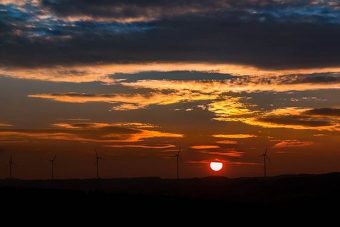
Australia recorded its best ever clean energy investment year in 2017, according to new figures from Bloomberg New Energy Finance, taking in $9 billion in 2017, up 150% on 2016 and lifting Australia to 7th position in terms of global clean energy investment last year.
The news comes as a national snapshot of Bloomberg New Energy Finance’s (BNEF) latest annual clean energy investment figures which were released this week. The 2017 Australian clean energy investment boom was driven by a rush to fulfill the country’s Large-scale Renewable Energy Target, as well as residents looking to escape the effect of rising power prices.
“2017 was a breakout year for the Australian Clean Energy sector,” said Leonard Quong, a Senior Analyst with Bloomberg New Energy Finance in Sydney. “Total investment in clean energy in Australia rose to a record USD 9 billion, smashing the previous record of USD 6.2 billion set in 2011. However 2017 will likely mark a peak — investment will begin to taper over the coming years unless there is a significant change in government policy.”
The spectacular increase in clean energy investment was driven primarily by investment in 4.2 GW (gigawatts) worth of large-scale projects — which works out to be an increase of 222% to $7.5 billion. Investment in small-scale energy increased by 18% to $1.5 billion, as the economics of rooftop solar make the technology more affordable, and the economics of Australia’s current energy mix make solar the cheaper option.
“Large corporates have also begun building or contracting directly with large-scale renewable energy generators to reduce their energy costs, which accounted for USD 259 million of the large-scale spend,” Quong added.
Unfortunately, it looks as if 2017 may end up being something of an anomaly, with investment to plateau in 2018 before collapsing in 2020, by which point the Large-scale Renewable Energy Target will be fulfilled and a lack of clean energy ambition and emissions reduction targets minimize the need for more large-scale projects.
“Although spending by consumers and businesses on small-scale PV is expected to continue, very little investment in large-scale projects will be required from 2021-30 to meet the emissions goals of the proposed National Energy Guarantee,” explained Kobad Bhavnagri, Bloomberg New Energy Finance’s Australian head. “A deeper emissions reduction target, or more action by state governments, will be required to sustain investment around the historic average.”
If a change in government brings new ambition and a desire to play a part on the international stage to reduce emissions reaches Canberra, then post-2020 clean energy investment might not be as hamstrung as it currently looks. However, this would require a shift in more than just Australia’s clean energy policies.
Source: cleantechnica.com



